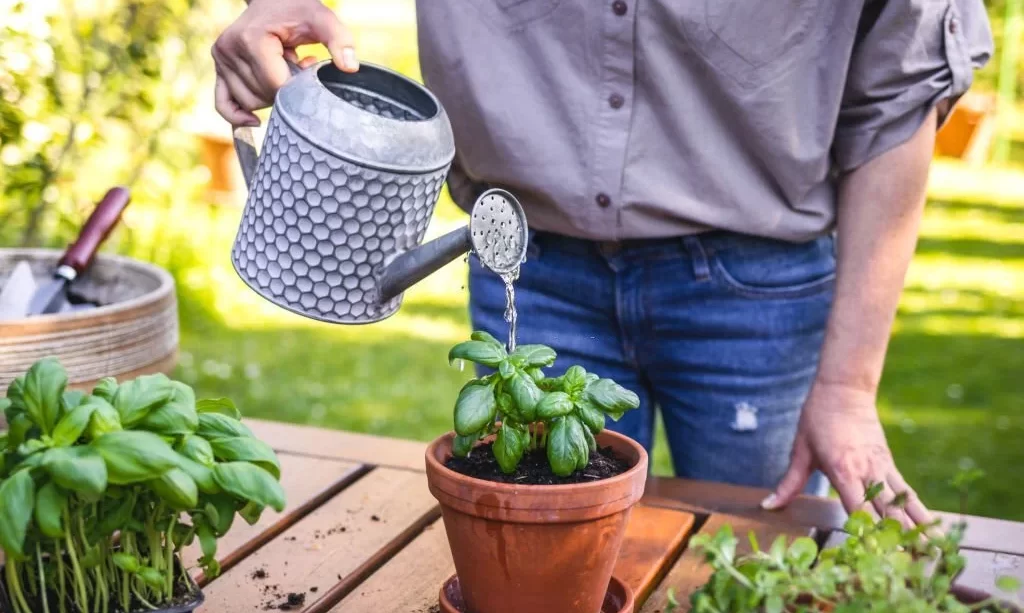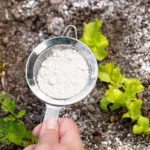Basil, with its aromatic leaves and culinary versatility, holds a special place in gardens and kitchens alike. To nurture healthy basil plants, it’s essential to provide the right amount of water. In this guide, we’ll unravel the key aspects of watering basil and help you achieve optimal growth and flavor.
Basil’s Water Needs
Basil plants have specific water requirements that contribute to their overall well-being:
- Moisture Balance: Basil thrives in soil that retains moisture without becoming waterlogged. It’s important to strike a balance between keeping the soil adequately moist and avoiding excess moisture.
- Susceptibility to Drying Out: Basil doesn’t tolerate drought well. If the soil becomes too dry, the leaves may wilt and the plant’s growth could be stunted.
- Sensitive Leaves: Basil’s leaves are sensitive to water. Wet leaves can lead to fungal diseases, so it’s crucial to avoid overhead watering.
- Temperature Influence: Hot weather and direct sunlight can cause basil to dry out faster, requiring more frequent watering.
Understanding these fundamental aspects of basil’s water needs sets the stage for successful basil cultivation. As we delve further, you’ll gain insights into when and how to water your basil plants effectively.
Watering Frequency
Determining how often to water basil depends on various factors:
- Soil Moisture Check: Regularly monitor the moisture level of the soil. Insert your finger about an inch into the soil near the base of the plant. If it feels dry, it’s time to water.
- Active Growth Period: During periods of active growth, such as spring and summer, basil needs more frequent watering. Aim for every 2-3 days.
- Adjust for Climate: Adapt your watering schedule based on climate conditions. Hot and dry weather may require more frequent watering to prevent the soil from drying out.
- 3 Cups / 1 quart of Tulsi Plant / Holy Basil Plant Potting Soil Mix. Soil is packed in a resealable clear poly zip bag. Soil can be stored in the bag as long as its kept dry.
- Custom hand blended soil prepared in Maryland, USA from Baby Violets.
- Can be used for Tulsi/ Holi Basil/Curry Leaf or Jasmine plants.
- 1 quart / 3 cup bag – can fill 15 (2″ pots) or 9 (3″ pots) or 4 (4″ pots). Please note, this is an estimate and the amount may vary slightly, based upon plant stem size and root size.
- Soil contains 50% peat moss & 50% perlite. There are no extra additives to this potting mix and no fertilizers. The perlite (super coarse), provides extra drainage and is chemically inert and sterile. This is a lightweight, airy soil mix. Not dense, compressed or compacted.
Watering Technique
The way you water your basil can influence its health:
- Base Watering: Direct water at the base of the plant, near the soil. Avoid wetting the leaves, as this can lead to fungal issues.
- Morning Watering: Water your basil in the morning. This allows excess moisture on the leaves to evaporate during the day, reducing the risk of disease.
- Consistent Application: Water consistently and evenly around the plant to ensure all roots receive moisture.
Container vs. Ground Planting
Whether you’re growing basil in containers or directly in the ground, watering considerations can vary:
- Containers: Basil planted in pots tends to dry out more quickly due to limited soil volume. Monitor container-grown basil closely and adjust your watering frequency accordingly.
- In-Ground Planting: Basil planted in the ground benefits from the soil’s natural moisture retention. While you still need to water regularly, the soil’s capacity to hold moisture can affect your watering schedule.
Conclusion
Mastering the art of watering basil is a crucial step towards nurturing healthy and thriving plants. By understanding the balance between moist soil and avoiding waterlogging, gauging watering frequency based on growth phases and weather conditions, and employing proper watering techniques, you’re ensuring your basil’s success. Whether you’re growing basil in containers on a sunny windowsill or in a garden bed, your attentive care will be rewarded with an abundance of aromatic basil leaves ready to elevate your culinary creations. Remember that basil’s response to water is a dance of balance, and with practice, you’ll become adept at providing the perfect hydration for your herb garden.





